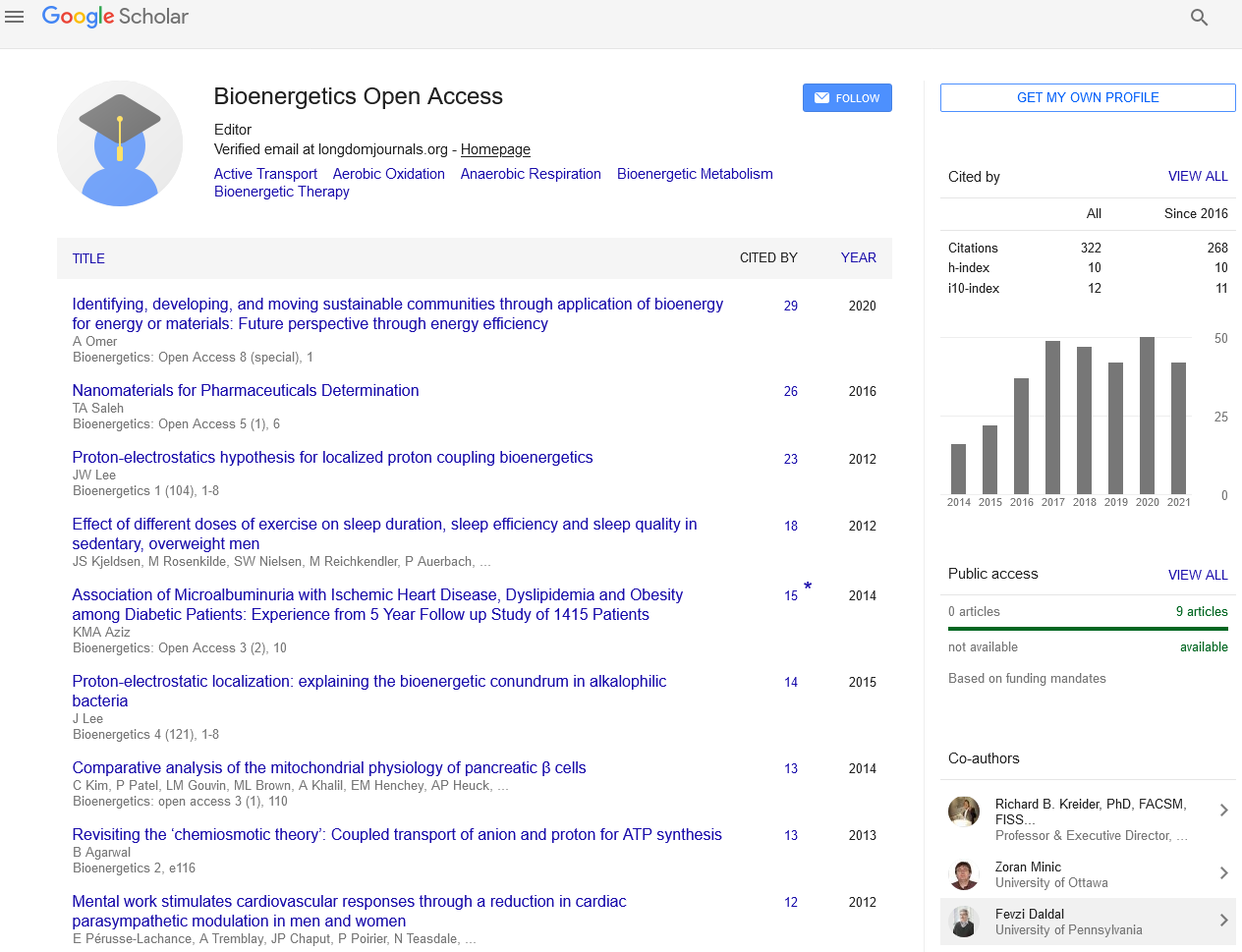Indexed In
- Open J Gate
- Genamics JournalSeek
- Academic Keys
- ResearchBible
- RefSeek
- Directory of Research Journal Indexing (DRJI)
- Hamdard University
- EBSCO A-Z
- OCLC- WorldCat
- Scholarsteer
- Publons
- Euro Pub
- Google Scholar
Useful Links
Share This Page
Journal Flyer

Open Access Journals
- Agri and Aquaculture
- Biochemistry
- Bioinformatics & Systems Biology
- Business & Management
- Chemistry
- Clinical Sciences
- Engineering
- Food & Nutrition
- General Science
- Genetics & Molecular Biology
- Immunology & Microbiology
- Medical Sciences
- Neuroscience & Psychology
- Nursing & Health Care
- Pharmaceutical Sciences
Scavenging reactive aldehydes protects blood proteins and lipids against peroxynitrite mediated oxidative damage
3rd International Conference on Lipid Science and Technology
December 11-12, 2017 | Rome, Italy
Ayman G Mustafa
Qatar University, Qatar
Posters & Accepted Abstracts: Bioenergetics
Abstract:
Peroxynitrite is an oxygen free radical produced in the intravascular compartment from the reaction of nitric oxide with the superoxide anion and is a hallmark of oxidative stress. The production of peroxynitrite is documented to increase under many pathological conditions Peroxynitrite can destroy plasma proteins and the lipids of plasma membranes of red blood cells and of platelets. These effects may explain why excessive production of peroxynitrite contributes to the etiology of several pathological conditions and to ageing. Pharmacological agents that reverse the effects induced by peroxynitrite may thus delay ageing and disease progression of several chronic diseases. We have previously developed an in vitro assay that allows us to investigate the effects of peroxynitrite induced oxidative damage in the plasma and on platelets. This assay correlates the oxidative damage induced by peroxynitrite with the rate of formation of protein carbonyl groups, 3-nitrotyrosine and thiobarbituric acid reactive substances. Using the above assay, we evaluated the ability of phenelzine, a scavenger of reactive aldehydes, to reverse the effects induced by peroxynitrite. Herein, we show that phenelzine significantly decreases the levels of lipid peroxidation in the plasma and in platelet samples. Moreover, it inhibits carbonyl group and 3-nitrotyrosine formation in the plasma and platelet proteins. Our findings continue to validate the significant role of lipid peroxidation in the pathogenesis of many diseases that involve free radical production. Recent Publications: 1. Mustafa A G, Bani-Ahmad M A, Jaradat A Q and Allouh M Z (2015) Tempol protects blood proteins and lipids against peroxynitritemediated oxidative damage. Exp Biol Med (Maywood). 240(1):10912. 2. Allouh M Z, Daradka H M, Al Barbarawi M M and Mustafa AG (2014) Fresh onion juice enhanced copulatory behavior in male rats with and without paroxetine-induced sexual dysfunction. Experimental Biology and Medicine. 239(2):177-82. 3. Mustafa A G, Alshboul O A (2013) Pathophysiology of traumatic brain injury. Neurosciences (Riyadh). 18(3):222-34. 4. Mustafa A G, Wang J A, Carrico K M, Hall E D (2011) Pharmacological inhibition of lipid peroxidation attenuates calpain-mediated cytoskeletal degradation after traumatic brain injury. Journal of Neurochemistry. 117(3):579-88. 5. Mustafa A G, Singh I N, Wang J, Carrico K M, Hall E D (2010) Mitochondrial protection after traumatic brain injury by scavenging lipid peroxyl radicals. Journal of Neurochemistry. 114(1):271-80.
Biography :
Ayman G Mustafa has completed his PhD from University of Kentucky. He is specialized in the role of lipid radicals in the pathogenesis of neurodegeneration. Following graduation, he is trying to apply his expertise in lipid radicals and lipid peroxidation to other body systems. His aim is to fully elucidate the vital role of protecting human body lipids from oxidative damage in the human health.

